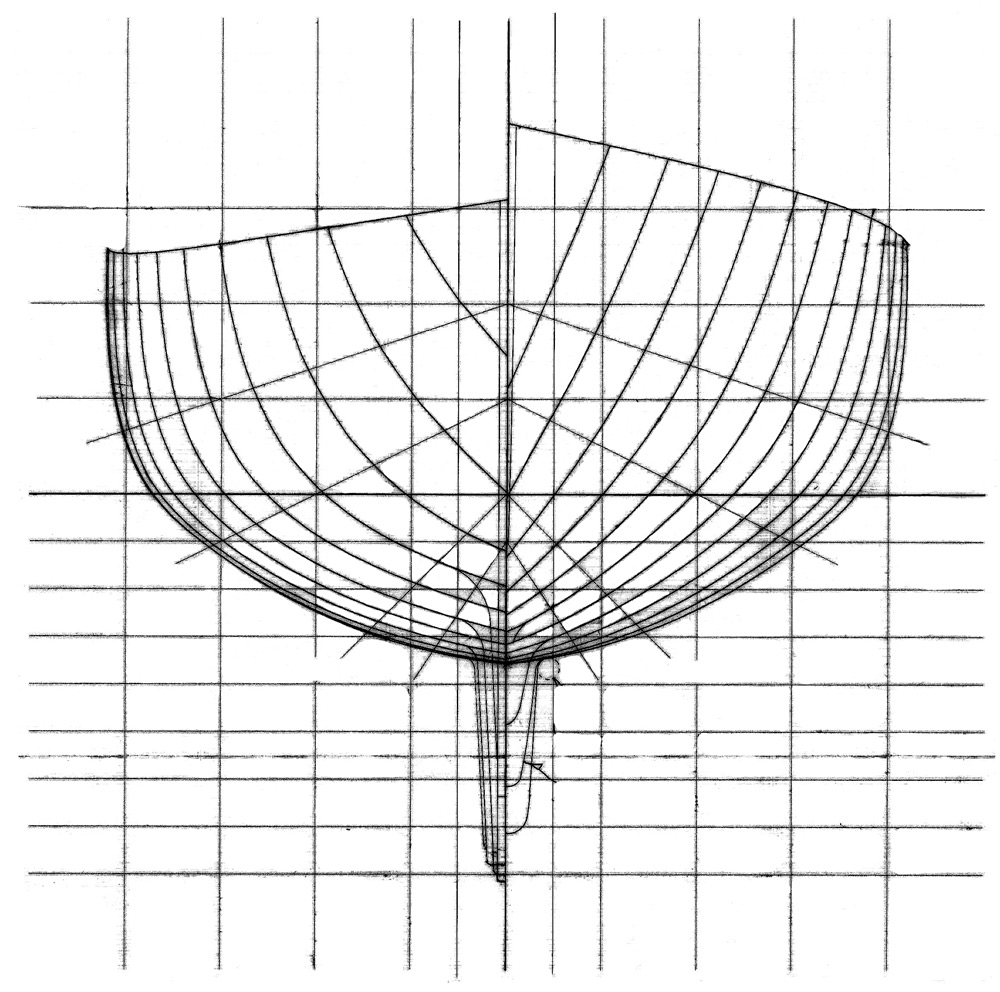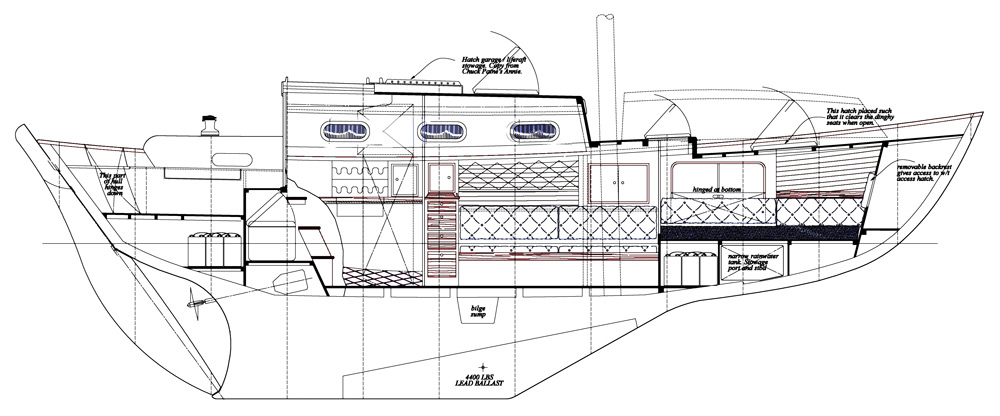Full Circle 30
This small oceangoing cruiser can be built by DIY builders
Chuck’s next adventure into double-enders and perhaps his most popular is Frances. There is a little jump in D/L up to 334 and the L/B is a bit less than Carol’s. But the biggest change in shape is the lack of hollow garboards on Frances. This gives you greater keel span for a given draft. Note also how the leading edge of the keel shows a slight concavity reducing wetted surface and making for a more effective keel planform. In the plan view you can see once again that this hull is very symmetrical fore and aft. This is a hallmark of Chuck’s double-enders. The straight deadrise sections of Carol are gone and replaced with a more arced section that flattens as it meets the centerline. Again, this increases effective keel span for a given draft.

Full Circle is a 30-footer with a 24-foot 7-inch DWL and a D/L of 279, quite a jump down from his heavier early double-enders. I suppose most of you would call this a full keel but given the way the leading edge is distinctly not part of the canoe body and the trailed edge of the keel is carved away I’d prefer to call this a “full-ish” keel. The changes in this keel planform probably explain the lower D/L on this design compared to the early double-enders Chuck designed. But, to my eye, the biggest change in this design is the steep deadrise sectional shape giving the hull a firmer bilge for better form stability. This midsection shape is not dissimilar to my own Valiant 40 hull shape. At least the midsections are similar.
The carved-away keel aft allows the outboard rudder to be partially balance reducing some helm pressure. The plan view again shows very balanced waterlines fore and aft. It’s a pretty hull and like all of Chuck’s boats it shows a strong spring to the sheer. If you have the “eye” and Chuck certainly does, you might as well use it and produce a beautiful hull.
I’ll leave you alone with the layout. It’s all you need to be very comfortable on this 30-footer.
Forgive me if I got a bit yacht design geeky on this review. But I warned you these reviews would be a bit different.
LOA: 30’; LWL 24’7”; Beam 9’4”; Draft 4’ 10”; Displ. 9,285 lb.; Ballast 4,400 lb.; Sail area 475 sq. ft.; D/L 279; L/B 3.21; SA/D 15.24 www.chuckpaine.com




Comments